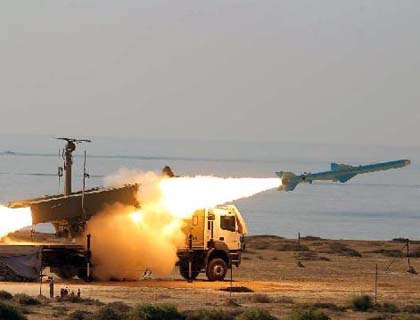It has been more than three decades since the Islamic revolution in Iran toppled the Pahlavi Dynasty and its last monarch, Mohammad Reza Shah Pahlavi. The era that followed has seen the Islamic Republic in Iran at an uneasy relationship with the West. The recent controversies over the Strait of Hormuz and Iran's threats to block the Strait have catapulted the tensions to a new high. The controversies surrounding Iran's nuclear program have been a major thorn in the West's relations with Iran. At least since 2002, the West has been increasingly concerned about Iran's nuclear program.
However, the issue of nuclear program is nothing new and is not limited to the past ten years. According to the recently released and declassified documents, as early as 1970s and during the reign of Mohammad Reza Shah Pahlavi, Iran's nuclear program was an important variable in the calculus of the Western relations with Iran.
The origins of Iran's nuclear power plant in the city of Bushehr and the famous nuclear research center in the University of Tehran date back to the era of the Shah before the Islamic revolution in 1979. The Shah had high-flying ambitions including nuclear and, as documented and confirmed by newly-released documents, it was a major irritant for the West.
As documented by the Christian Science Monitor, Israel and the U.S. had on numerous times expressed concern at the country's nuclear programs throughout 1980s and 1990s. What is very interesting is that Israel, during both 1980s and 1990s, many times went to the extent of proclaiming that Iran will complete building a nuclear bomb in a few years.
However, now it is 2012 and yesterday the American Secretary of Defense, Leon Panetta, announced what has been the conclusion in most of the Western capitals since at least 2003: that Iran is not working on building any nuclear device.
There is a great deal of difference between mastering the technology needed to build a nuclear device and actually taking the step of building one. By all indications, the country is not working on building one but, certainly, does not shy away from mastering the required range of technologies needed to build one for the rainy day.
What is particularity worrying is that diplomatic and military tensions on both sides have been building up and nearing dangerous levels. Iran recently carried out extensive 10-day long naval exercises in the Persian Gulf. The military drills involved testing one of its medium-range missiles.
Iran has already announced that it will hold more naval exercises in Persian Gulf in February. As documented and reported in media, war plans envisioning an all-out aerial attack on thousands of targets within Iran and even ground invasion have already been drawn up by the U.S. and integrated into the U.S.-NATO-Israel military alliance. According to Arab Times, "Theater Iran Near Term" or "TIRANNT" is the codename for one component of the war plans that involves the potential aerial attacks.
As reported and confirmed in media, nuclear weapons (both strategic and "conventional") are already stationed on the soil of Turkey (a NATO member) in vicinity of the Iranian territory. The U.S. Military and the Israeli military are going to hold over the coming weeks what has been described as the largest aerial war exercise in Israel's history. These are only some of the military preparations that are visualized based on a potential military confrontation between Iran and the western coalition.
The costs of war are no doubt devastating. The wars in Iraq and Afghanistan and the dramatic increase in military appropriations and spending in the U.S. have been, economically, a huge burden for the U.S. Today, almost 3/4 of what the federal government in the U.S. earns goes to finance the military.
The post-9/11 surge in military budgets have worked to balloon the American fiscal deficit and has resulted into almost a fiscal collapse of that country. Borrowing irresponsibly and at an accelerating pace, today, is the only way left for that country to sustain itself, keep intact the world's faith in in its economy and finance amid an economic crisis that is indeed unprecedented in the history of mankind.
If a military confrontation flares up with Iran, and given the extremely high risk of a rapid escalation of it into a major regional war, it would mean another unbearably high burden on the fragile financial situation of the U.S. and the destruction of whatever remains of a civilian economy.
What further complicates and worsens the standoff between Iran and the West is Iran's domestic political conditions. The country's internal political environment is increasingly becoming homogeneous with political dissent being less and less tolerated and the hands of more hardline factions strengthening.
The camp of the so-called 'reformists' has been decimated and they find themselves cornered and powerless in front of much more ideological and hardline factions. The political scene is being increasingly dominated by those forces who are permanently and irreversibly opposed to normalizing relations with the West either out of ideological commitments or other vested interests and considerations including economic. This ongoing process of purging the political scene and political institutions of more moderate forces is increasingly turning.

